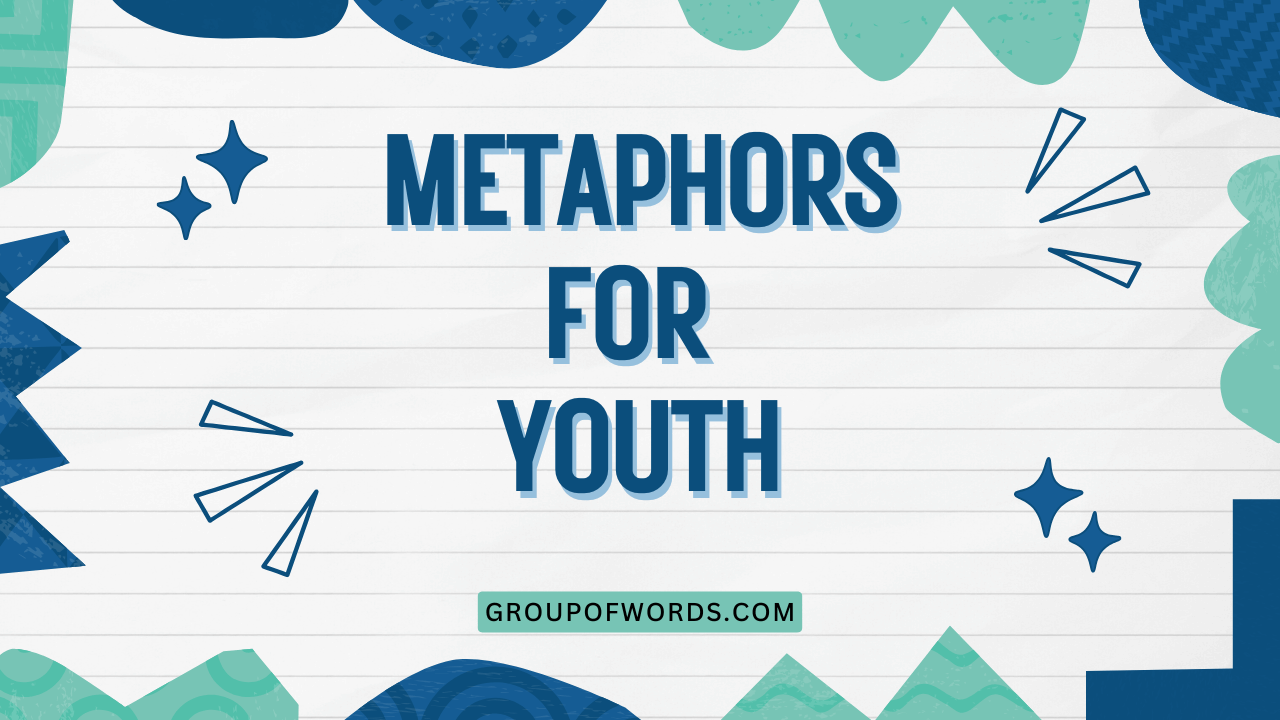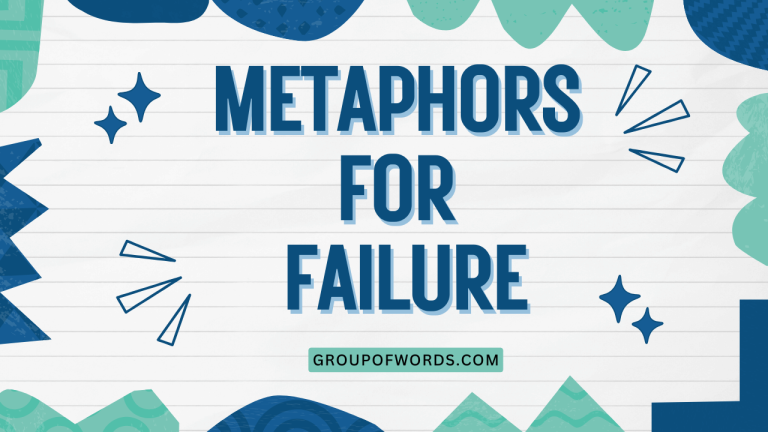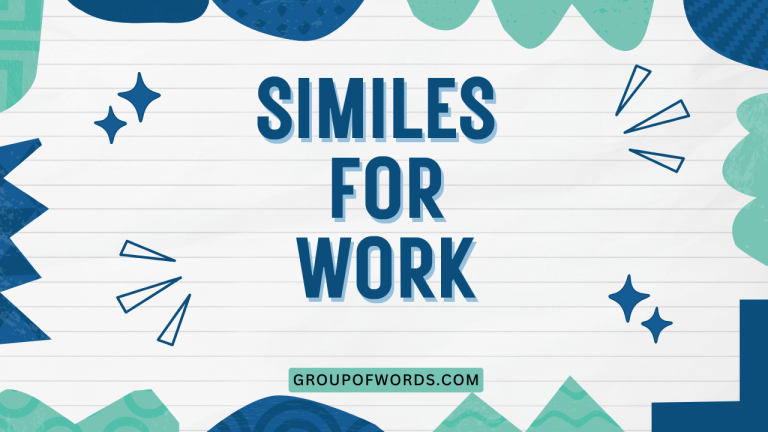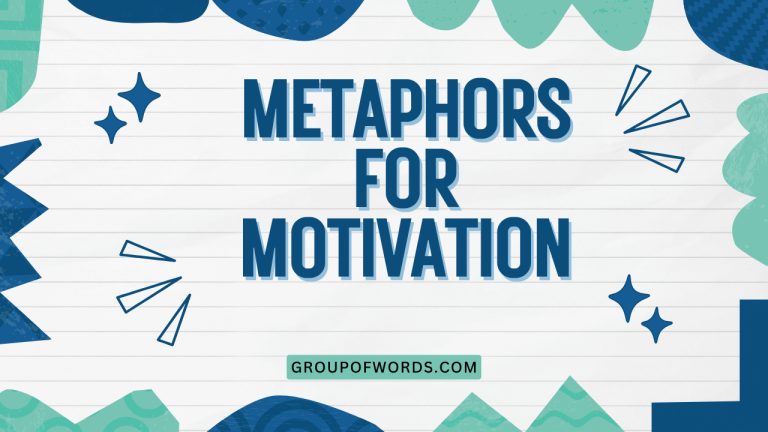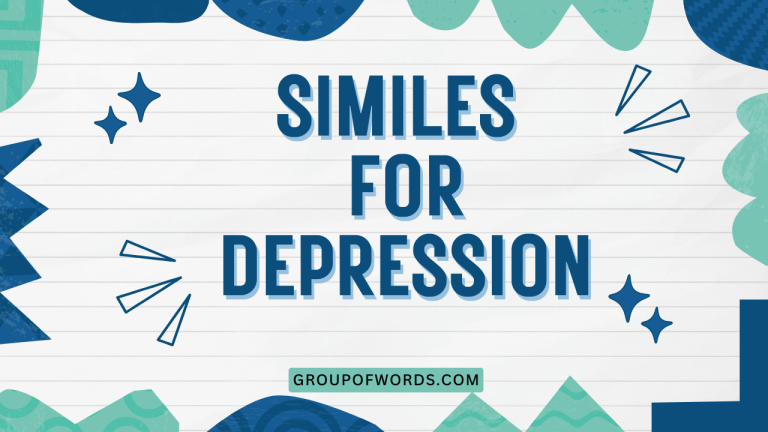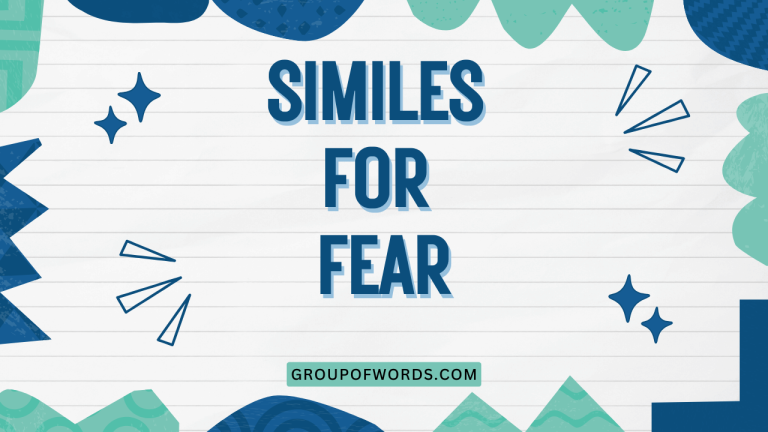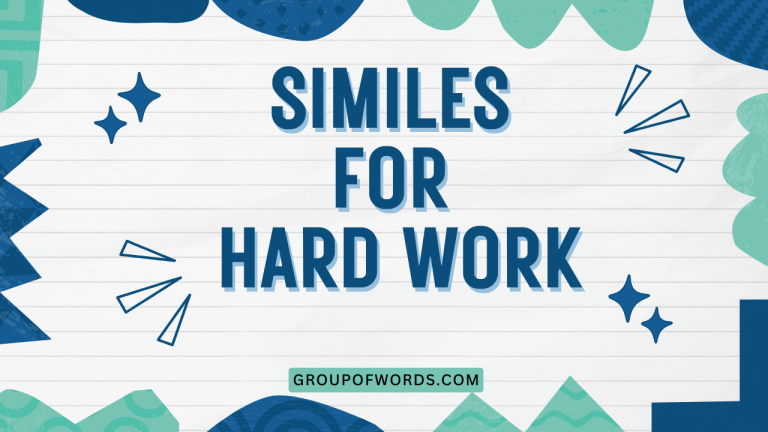Metaphors for Youth: Understanding Figurative Language
Metaphors are powerful tools in the English language, allowing us to express complex ideas and emotions by comparing them to something else. When exploring youth, metaphors can be particularly evocative, capturing the vibrancy, potential, and challenges of this stage of life.
Understanding these metaphors enhances our comprehension of literature, poetry, and everyday conversations, and helps us appreciate the richness of figurative language. This article explores common metaphors for youth, providing examples, usage rules, and practice exercises to solidify your understanding.
This guide is perfect for English language learners, students studying literature, or anyone interested in improving their grasp of figurative language.
This article is designed to provide a comprehensive overview of metaphors for youth, equipping you with the knowledge and skills to identify, interpret, and use them effectively. By delving into the nuances of these metaphors, you’ll gain a deeper appreciation for the power of language and its ability to capture the essence of youth.
Table of Contents
- Introduction
- Definition of Metaphor
- Structural Breakdown
- Types of Metaphors
- Metaphors Specifically for Youth
- Examples of Metaphors for Youth
- Usage Rules
- Common Mistakes
- Practice Exercises
- Advanced Topics
- FAQ
- Conclusion
Definition of Metaphor
A metaphor is a figure of speech that directly compares two unlike things without using “like” or “as.” It asserts that one thing *is* another, creating a resemblance by transferring qualities from one to the other. Metaphors are used to add color, depth, and emotional resonance to language. They help us understand abstract concepts by relating them to more concrete experiences.
Unlike similes, which use “like” or “as” to make a comparison (e.g., “He is *like* a lion”), metaphors state the comparison directly (e.g., “He *is* a lion”). This direct comparison makes metaphors more impactful and imaginative.
The function of a metaphor is to provide a new perspective on a subject, highlight specific characteristics, and evoke emotions. In the context of youth, metaphors can express the innocence, potential, vulnerability, and energy associated with this stage of life.
Structural Breakdown
A metaphor typically consists of two key elements:
- Tenor: The subject being described. In our context, the tenor is youth.
- Vehicle: The object or idea used to represent the tenor. This is what youth is being compared to (e.g., a seed, a sunrise).
The effectiveness of a metaphor depends on the connection between the tenor and the vehicle. The stronger the association and the more relevant the shared qualities, the more impactful the metaphor will be.
For example, in the metaphor “Youth is a blooming flower,” the tenor is “youth,” and the vehicle is “a blooming flower.” The shared qualities include beauty, fragility, and potential for growth.
Types of Metaphors
Metaphors can be categorized in several ways, but here are a few common types:
- Standard Metaphor: A direct comparison where the tenor and vehicle are clearly stated (e.g., “Life is a highway”).
- Implied Metaphor: The tenor is not explicitly stated but is implied through the vehicle (e.g., “He roared his disapproval,” implying he is like a lion).
- Extended Metaphor: A metaphor that is developed over several lines or throughout an entire piece of writing.
- Mixed Metaphor: A combination of two or more incompatible metaphors, often resulting in a humorous or nonsensical effect (e.g., “Let’s nip it in the bud before it snowballs”).
Understanding these different types helps in analyzing and appreciating the diverse ways metaphors can be used to convey meaning.
Metaphors Specifically for Youth
Youth is often represented through various metaphors that highlight its unique characteristics and potential. Here are some common metaphors and their interpretations:
Youth as a Seed
This metaphor emphasizes the potential for growth and development that lies within young people. A seed contains the potential to become a strong, mature plant.
Similarly, youth holds the promise of future achievements and contributions.
Youth as a Sunrise
The sunrise symbolizes new beginnings, hope, and the dawn of a new day. This metaphor highlights the fresh start and boundless possibilities that youth represents.
It evokes a sense of optimism and potential.
Youth as a Journey
This metaphor portrays youth as a period of exploration, discovery, and growth. Like a journey, youth is filled with challenges, opportunities, and transformative experiences.
It emphasizes the process of learning and self-discovery.
Youth as a Blank Canvas
A blank canvas represents the potential for creation and self-expression. This metaphor suggests that young people have the freedom to shape their identities and futures.
It highlights the importance of providing them with opportunities and support to explore their passions.
Youth as a Storm
While not always positive, this metaphor acknowledges the turbulent and unpredictable nature of youth. It reflects the emotional intensity, impulsiveness, and challenges that young people often face.
It emphasizes the need for guidance and understanding during this period.
Examples of Metaphors for Youth
To further illustrate the use of metaphors for youth, consider the following examples categorized by the type of metaphor:
Youth as a Seed Examples
This table provides examples of how youth can be metaphorically compared to a seed, highlighting potential, growth, and fragility.
| Metaphor | Interpretation |
|---|---|
| Her youthful spirit was a seed of hope in the community. | Her optimism and energy inspired positive change. |
| His mind was a fertile seedbed, ready to absorb knowledge. | He was eager to learn and grow intellectually. |
| The seeds of their potential were just beginning to sprout. | Their talents and abilities were starting to emerge. |
| Youth is a seed, waiting for the right conditions to blossom. | Young people need nurturing and support to reach their full potential. |
| The young artist’s talent was a seed planted long ago. | His artistic ability had been developing since childhood. |
| Their dreams were seeds, carefully nurtured with hard work. | They were working diligently to achieve their aspirations. |
| The child’s curiosity was a seed that would blossom into a love of learning. | Her inquisitiveness would lead to a lifelong pursuit of knowledge. |
| The young athlete’s dedication was a seed of future success. | His commitment would lead to achievements in sports. |
| Her kindness was a seed that spread goodwill among her peers. | Her compassionate actions positively influenced others. |
| The young entrepreneur’s idea was a seed of a successful business. | His innovative concept had the potential to become a thriving enterprise. |
| His youthful enthusiasm was a seed that invigorated the team. | His energy and passion motivated the group. |
| Her potential was a seed, and education was the water that nourished it. | Education helped her talents and abilities to grow. |
| The seeds of change were sown by the youth’s activism. | Young people’s actions initiated social and political transformation. |
| His youthful idealism was a fragile seed, easily crushed by cynicism. | His optimism was vulnerable to negativity. |
| The seeds of innovation were planted in the minds of young engineers. | Young engineers were encouraged to develop creative solutions. |
| Her talent for music was a seed that needed careful cultivation. | Her musical ability required dedicated practice and guidance. |
| The seeds of friendship were sown during their childhood. | Their bond of friendship began in their early years. |
| His determination was the seed that grew into unwavering resilience. | His strong will led to his ability to overcome challenges. |
| The seeds of doubt were planted by his critics, but he refused to let them grow. | He ignored the negative comments and maintained his confidence. |
| Youth is like a seed, full of potential that awaits the right environment to thrive. | Young people require supportive surroundings to flourish. |
Youth as a Sunrise Examples
The following table illustrates how youth can be compared to a sunrise, focusing on new beginnings, hope, and potential.
| Metaphor | Interpretation |
|---|---|
| Her youth was the sunrise of her life, full of promise and potential. | Her early years were marked by hope and opportunity. |
| His youthful energy was like a sunrise, chasing away the darkness. | His enthusiasm brought positivity and optimism. |
| Youth is the sunrise of society, bringing new ideas and perspectives. | Young people contribute fresh insights and innovations. |
| Their youthful dreams were as bright as the morning sunrise. | Their aspirations were vivid and inspiring. |
| The sunrise of his career was just beginning, full of possibilities. | His professional life was starting with great potential. |
| Her youthful spirit was a sunrise that warmed the hearts of those around her. | Her positivity and kindness had a positive impact on others. |
| His creativity was the sunrise of a new artistic movement. | His innovative ideas sparked a new trend in art. |
| Youth is a sunrise, each day bringing new opportunities for growth. | Every day offers young people chances to learn and develop. |
| The sunrise of their love was a beautiful and tender moment. | The beginning of their romantic relationship was filled with affection. |
| Her youthful optimism was a sunrise that dispelled any doubts. | Her positive outlook overcame uncertainty. |
| His influence was the sunrise of a new era in the company. | His leadership marked the beginning of a positive change. |
| Her youthful energy was like a sunrise, invigorating the tired community. | Her enthusiasm revitalized the community. |
| Youth is similar to the sunrise; it is the dawn of a new life. | Youth marks the beginning of a person’s life journey. |
| Their youthful ideas were as refreshing as the morning sunrise. | Their innovative thoughts were stimulating and revitalizing. |
| Her arrival was the sunrise of a new chapter in their lives. | Her presence marked the beginning of a positive change. |
| Youthful innovation is the sunrise that brightens the world with new possibilities. | The creativity of young people brings new opportunities to the world. |
| The sunrise of their friendship promised a lifetime of shared experiences. | The beginning of their friendship indicated future shared moments. |
| His youthful passion was as vibrant as a sunrise, igniting enthusiasm in others. | His strong enthusiasm motivated others. |
| Youth is a sunrise that illuminates the path forward with unwavering hope. | Youth provides guidance with constant hope. |
| Her youthful curiosity was like a sunrise, revealing new wonders each day. | Her inquisitiveness brought new discoveries daily. |
Youth as a Journey Examples
This table provides examples of how youth can be metaphorically compared to a journey, highlighting discovery, challenges, and growth.
| Metaphor | Interpretation |
|---|---|
| Youth is a journey of self-discovery. | Young people are exploring their identities and values. |
| His teenage years were a turbulent journey, filled with ups and downs. | He experienced many challenges and changes during adolescence. |
| The journey of youth is often marked by uncertainty and exploration. | Young people face many unknowns and seek new experiences. |
| Her education was a journey that broadened her horizons. | Learning expanded her knowledge and understanding. |
| The youthful journey is filled with detours and unexpected turns. | Young people often encounter unforeseen challenges and opportunities. |
| His career path was a journey of continuous learning and growth. | He constantly developed his skills and knowledge in his profession. |
| Youth is a journey, and every step is a lesson learned. | Every experience in youth provides valuable insights. |
| The journey of adolescence is a complex and transformative experience. | Teenage years involve significant changes and development. |
| Her life was a journey of resilience, overcoming obstacles along the way. | She demonstrated strength and perseverance in the face of adversity. |
| The journey of youth is a quest for identity and purpose. | Young people seek to understand who they are and what they want to achieve. |
| His entrepreneurial journey began in his youth, full of ambition and risk. | He started his business ventures at a young age, driven by determination. |
| Her artistic journey was a winding path of creativity and self-expression. | She explored her artistic talents through various mediums and styles. |
| Youth is a journey, and the destination is self-awareness. | The ultimate goal of youth is to understand oneself. |
| The journey of their friendship began in childhood and continued through life. | Their bond of friendship started in their early years and endured. |
| Her journey of healing was a long and challenging process. | She faced difficulties while recovering from emotional or physical wounds. |
| Youthful exploration is a journey into the unknown, fueled by curiosity. | Young people venture into new areas, motivated by inquisitiveness. |
| The journey of personal growth is a lifelong pursuit, starting in youth. | The process of self-improvement continues throughout life, beginning in youth. |
| His journey of leadership began in his youth, honing his skills over time. | He developed his leadership abilities starting at a young age. |
| Youth is a journey where every experience shapes the traveler. | Every interaction in youth influences a person. |
| Her educational journey was a path to empowerment and independence. | Her education enabled her to become self-sufficient and strong. |
Youth as a Blank Canvas Examples
This table provides examples of how youth can be metaphorically compared to a blank canvas, highlighting potential, creativity, and the ability to shape one’s future.
| Metaphor | Interpretation |
|---|---|
| Youth is a blank canvas, waiting to be filled with experiences and dreams. | Young people have the potential to create their own unique lives. |
| His mind was a blank canvas, ready to absorb knowledge and ideas. | He was open to learning and exploring new concepts. |
| Youth is a blank canvas, and life is the artist’s brush. | Experiences and choices shape a young person’s identity. |
| Her future was a blank canvas, full of endless possibilities. | She had many options and opportunities ahead of her. |
| The blank canvas of youth allows for limitless creativity and innovation. | Young people have the freedom to express themselves and create new things. |
| His life was a blank canvas, waiting for him to paint his masterpiece. | He had the opportunity to create a fulfilling and meaningful life. |
| Youth is like a blank canvas, ready for the vibrant colors of life. | Young people are ready to experience the richness and diversity of life. |
| Her potential was a blank canvas, inviting her to create her own destiny. | She had the power to shape her future and achieve her goals. |
| The blank canvas of youth is an opportunity to create a world of beauty and wonder. | Young people have the chance to make a positive impact on the world. |
| His youthful imagination was a blank canvas, inspiring him to create new worlds. | He used his creativity to develop imaginative and innovative ideas. |
| Her life was a blank canvas, and she was determined to paint it with joy and purpose. | She wanted to create a happy and meaningful life. |
| Youth is a blank canvas waiting to be filled with wisdom and experience. | Young people will gain knowledge and skills as they live their lives. |
| The blank canvas of youth is an invitation to explore and discover one’s true self. | Young people have the opportunity to understand who they are. |
| Her story was a blank canvas, ready to be written with courage and resilience. | She was prepared to face challenges and overcome obstacles. |
| His future was a blank canvas, and he was eager to paint it with his passions. | He was excited to pursue his interests and dreams. |
| Youthful creativity is a blank canvas where imagination knows no bounds. | The creativity of young people has no limits. |
| Her heart was a blank canvas, ready to be filled with love and compassion. | She was open to experiencing love and kindness. |
| His potential was a blank canvas, awaiting the strokes of hard work and dedication. | He needed to work hard to achieve his goals. |
| Youth is a blank canvas that allows one to create a legacy of greatness. | Young people have the opportunity to achieve significant accomplishments. |
| Her mind was a blank canvas, inviting new perspectives and understanding. | She was receptive to new ideas and insights. |
Usage Rules
When using metaphors for youth, consider the following rules:
- Clarity: Ensure the comparison is clear and understandable. Avoid using obscure or confusing vehicles.
- Relevance: The shared qualities between the tenor (youth) and the vehicle should be relevant and meaningful.
- Consistency: Avoid mixing metaphors that create conflicting or nonsensical images.
- Context: Consider the context in which the metaphor is used. The appropriateness of a metaphor can vary depending on the audience and purpose.
- Originality: Strive for originality in your metaphors. While common metaphors can be effective, fresh and imaginative comparisons can be more impactful.
By following these rules, you can use metaphors effectively to enhance your writing and communication.
Common Mistakes
Here are some common mistakes to avoid when using metaphors for youth:
| Incorrect | Correct | Explanation |
|---|---|---|
| Youth is like a seed, but it’s also a roaring fire. | Youth is a seed, full of potential for growth. | Avoid mixing incompatible metaphors. |
| His youth was a brick wall. | His youth was a time of overcoming obstacles. | Ensure the comparison is meaningful and relevant. |
| Youth is a vaguely purple concept. | Youth is a vibrant sunrise, full of new beginnings. | Use concrete and evocative imagery. |
| The youth was similar to a journey. | The youth was on a journey of self-discovery. | Use direct comparisons instead of similes when attempting to create a metaphor. |
Avoiding these common mistakes will help you create more effective and impactful metaphors.
Practice Exercises
Test your understanding of metaphors for youth with the following exercises:
Exercise 1: Identifying Metaphors
Identify the metaphors in the following sentences and explain their meaning.
| Question | Answer |
|---|---|
| 1. Her youthful spirit was a beacon of hope in the community. | Beacon of hope: Her spirit provided guidance and inspiration. |
| 2. Youth is a garden, needing constant care and attention. | Garden: Youth requires nurturing and cultivation to flourish. |
| 3. His teenage years were a rollercoaster of emotions. | Rollercoaster: His emotions were intense and unpredictable. |
| 4. The youth’s potential was a diamond in the rough. | Diamond in the rough: Their potential was valuable but needed development. |
| 5. Her youthful energy was a ray of sunshine on a cloudy day. | Ray of sunshine: Her energy brought positivity and brightness. |
| 6. Youth is a book waiting to be written. | Book: Youth is full of stories and experiences yet to come. |
| 7. His mind was a sponge, absorbing all the new information. | Sponge: His mind readily absorbed knowledge. |
| 8. The youth’s ideas were fireworks, illuminating the path forward. | Fireworks: Their ideas were bright, exciting, and inspiring. |
| 9. Her determination was a steel rod, supporting her through challenges. | Steel rod: Her determination provided strength and stability. |
| 10. Youth is a river, constantly flowing and changing. | River: Youth is a period of constant change and development. |
Exercise 2: Creating Metaphors
Create your own metaphors for youth using the following prompts.
| Prompt | Example Answer |
|---|---|
| 1. Youth as a mountain | Youth is a mountain, challenging to climb but offering breathtaking views from the summit. |
| 2. Youth as a song | Youth is a song, full of melodies and harmonies that create a unique composition. |
| 3. Youth as a forest | Youth is a forest, teeming with life, growth, and hidden paths. |
| 4. Youth as a dance | Youth is a dance, a series of steps and movements that express joy and freedom. |
| 5. Youth as a painting | Youth is a painting, a vibrant mix of colors and textures that create a unique masterpiece. |
| 6. Youth as a fire | Youth is a fire, burning bright with passion and energy. |
| 7. Youth as a puzzle | Youth is a puzzle, complex and challenging, but rewarding when solved. |
| 8. Youth as a star | Youth is a star, shining brightly with potential and promise. |
| 9. Youth as a bridge | Youth is a bridge, connecting the past with the future. |
| 10. Youth as a game | Youth is a game, full of rules and challenges, but also fun and excitement. |
Advanced Topics
For advanced learners, consider exploring the following topics:
- Historical Evolution of Metaphors for Youth: How have metaphors for youth changed over time, and what do these changes reflect about societal attitudes?
- Cultural Variations in Metaphors for Youth: How do different cultures use metaphors to represent youth, and what cultural values do these metaphors reflect?
- The Use of Metaphors in Youth Literature: How do authors use metaphors to portray the experiences and challenges of young people in literature?
- Cognitive Linguistics and Metaphor: Explore the cognitive processes involved in understanding and using metaphors.
These advanced topics provide a deeper understanding of the complexities and nuances of metaphors for youth.
FAQ
Here are some frequently asked questions about metaphors for youth:
- What is the difference between a metaphor and a simile?
A metaphor directly compares two unlike things without using “like” or “as,” while a simile uses “like” or “as” to make a comparison. For example, “He is a lion” (metaphor) vs. “He is like a lion” (simile).
- Why are metaphors useful in describing youth?
Metaphors provide a vivid and imaginative way to capture the essence of youth, highlighting its potential, challenges, and unique characteristics. They add depth and emotional resonance to descriptions of youth.
- How can I improve my ability to identify metaphors?
Practice analyzing different texts and identifying comparisons that are not literal. Pay attention to the qualities being transferred from one thing to another.
- What are some common themes in metaphors for youth?
Common themes include potential, growth, discovery, challenge, and transformation. Metaphors often highlight the energy, innocence, and vulnerability associated with youth.
- Can a metaphor be too abstract or confusing?
Yes, a metaphor can be too abstract or confusing if the connection between the tenor and vehicle is unclear or irrelevant. Ensure the comparison is meaningful and understandable.
- How do metaphors reflect cultural values?
Metaphors often reflect cultural values and beliefs. For example, a culture that values tradition might use metaphors that emphasize the importance of learning from elders, while a culture that values innovation might use metaphors that emphasize creativity and exploration.
- What is an extended metaphor?
An extended metaphor is a metaphor that is developed over several lines or throughout an entire piece of writing, creating a more complex and nuanced comparison.
- How can I use metaphors effectively in my writing?
Choose metaphors that are clear, relevant, and original. Consider the context and audience, and avoid mixing incompatible metaphors. Use metaphors to add depth, color, and emotional resonance to your writing.
Conclusion
Understanding metaphors for youth enhances our ability to appreciate the richness and complexity of language. By recognizing and interpreting these figurative expressions, we gain a deeper insight into the multifaceted nature of youth and the human experience.
The ability to use metaphors effectively not only improves comprehension but also allows for more creative and impactful communication.
Continue to practice identifying and creating metaphors in your daily reading and writing. Pay attention to the subtle nuances of language and the power of figurative expression.
By doing so, you will not only improve your grammar skills but also unlock a new level of creativity and understanding in your use of the English language. Embrace the challenge and enjoy the journey of mastering metaphors for youth.
